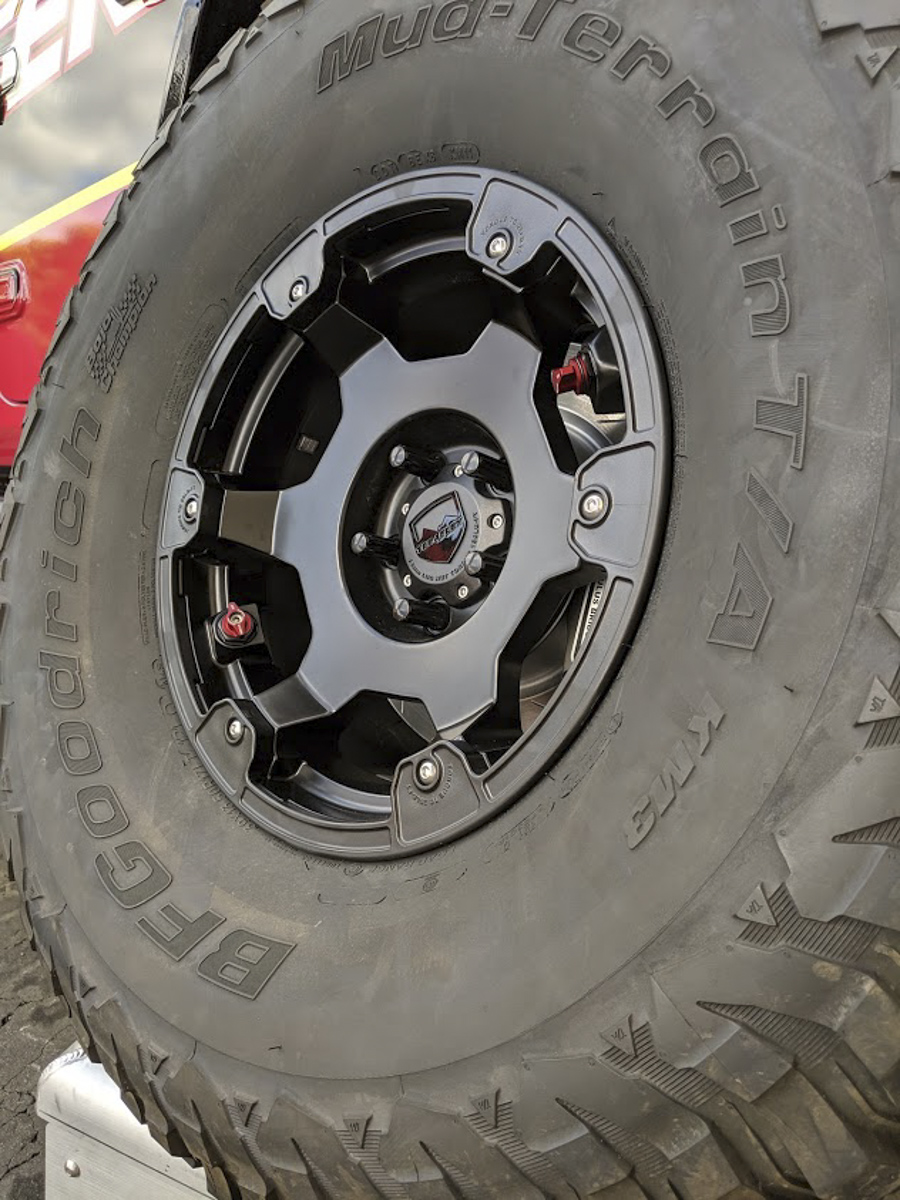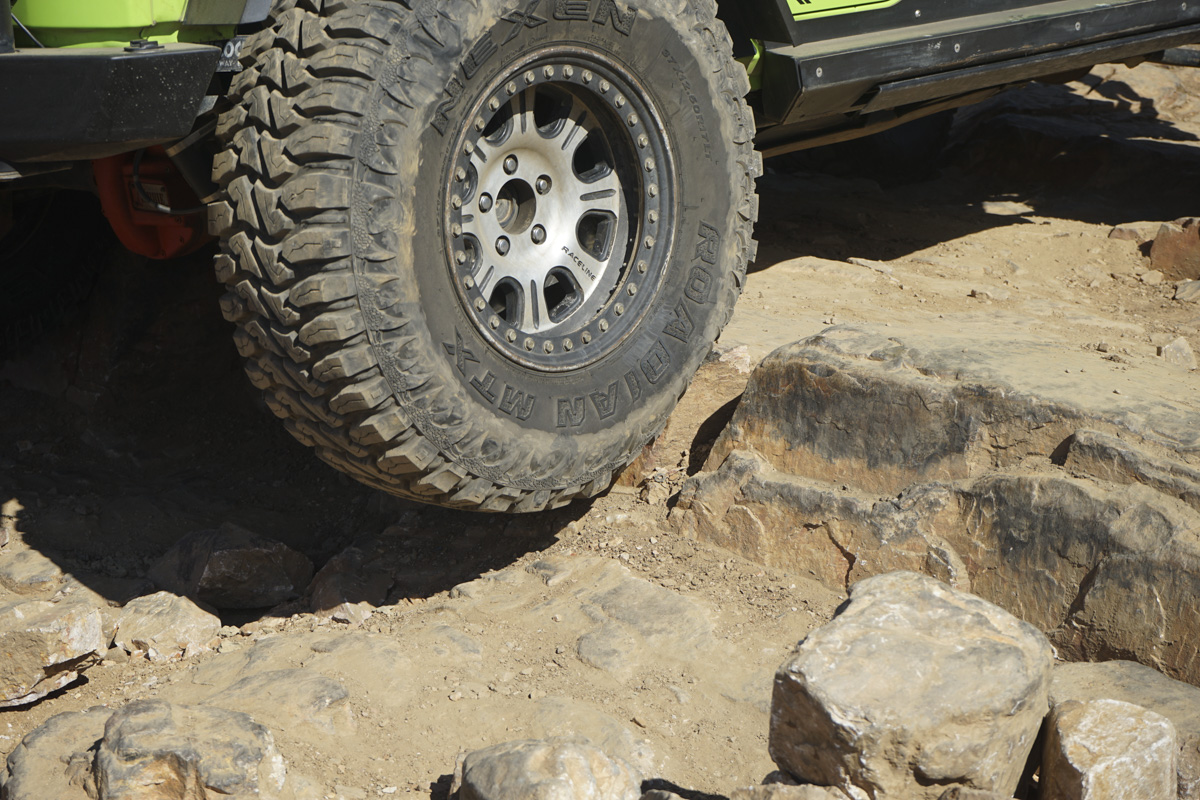Tech
Hoops: Tire Tech for the Uninformed
Originally Published in Issue 31 of 4Low Magazine
Make sure to subscribe to get the newest issues of 4Low Magazine right to your mailbox. CLICK HERE
Story by Big Rich Klein
Let’s talk tires, yes, the round black rubber things that your vehicle sits on as it’s driving down the road, off-road or on.
First, let’s get past what you know about tires and look at what all the markings on the tire mean and how they relate to how the tire is going to perform for you. Most everyone reading this knows how to find the tire size on the sidewall, but let’s break down what it really says.
Tire Type:
LT = Light Truck
P = Passenger
ST = Trailer
T = Temporary or spare.
Tire Width:
The width is shown in millimeters for most tires except Light Truck, which is typically in inches. So, 235 is the width of the tire in millimeters (mm), measured from sidewall to sidewall. Since this measure is affected by the width of the rim, the measurement is for the tire when it is on its intended rim size. Light Truck tires will read as Height – width – rim diameter. Example; 35×12.50r17 = 35 inches tall, by 12.50 inches wide, r is radial, 17 is the rim diameter in inches.
Aspect Ratio:
This number tells you the height of the tire, from the bead to the top of the tread, described as a percentage of the tire width. For example, an aspect ratio of 75 would be 75 percent of its width, or 176.25 mm on a 235 tire (.75 x 235 = 176.25 mm, or 6.94 in). The smaller the aspect ratio, the wider the tire in relation to its height.
Tire Construction
The letter designates the tire construction.
R = radial construction. This is the most common type of tire construction. Older tires were made using diagonal bias (D) or bias-belted (B) construction. A separate note indicates how many plies make up the sidewall of the tire and the tread.
Rim Diameter:
This number specifies, in inches, the wheel rim diameter the tire is designed for.
Uniform Tire Quality Grading:
Passenger car tires also have a grade on them as part of the Uniform Tire Quality Grading (UTQG) system. You can check the UTQG rating for your tires on most dealers pages, or on the page maintained by SaferCar.gov.
Your tire’s UTQG rating tells you three things:
- Tread Wear: This number comes from testing the tire in controlled conditions on a government test track. The higher the number, the longer you can expect the tread to last.
- Traction: Tire traction is rated AA, A, B, or C, with AA at the top of the scale. This rating is based on the tire’s ability to stop a car on wet concrete and asphalt. It does not indicate the tire’s cornering ability.
- Temperature: The tire temperature ratings are A, B, or C. The rating is a measure of how well the tire dissipates heat and how well it handles the buildup of heat. The temperature grade applies to a properly inflated tire that is not overloaded. Under-inflation, overloading, or excessive speed can lead to more heat buildup. Excessive heat buildup can cause tires to wear out faster or could even lead to tire failure.
Service Description:
The service description consists of two things:
- Load Ratings: The load rating is a number that correlates to the maximum rated load for that tire. A higher number indicates that the tire has a higher load capacity. The rating “105,” for example, corresponds to a load capacity of 2039 pounds (924.87 kg). A separate note on the tire indicates the load rating at a given inflation pressure.
- Speed Rating: The letter that follows the load rating indicates the maximum speed allowable for this tire (as long as the weight is at or below the rated load). For instance, S indicates that the tire can handle speeds up to 112 mph (180.246 kph).
Calculating the Tire Diameter:
Now that we know what these numbers mean, we can calculate the overall diameter of a tire. We multiply the tire width by the aspect ratio to get the height of the tire.
Tire height = 235 x 75 percent = 176.25 mm (6.94 in)
Then we add twice the tire height to the rim diameter.
2 x 6.94 in + 15 inches = 28.9 in (733.8 mm)
This is the unloaded diameter; as soon as any weight is put on the tire, the diameter will decrease.
Ok, now that we’ve confused some of you with all this technical stuff (you can find charts online that will break down each item above in terms that relate to the markings on your tires), let’s talk about what is most important about these ratings and how they can affect your situation. Let’s start with Uniform Tire Quality Grading (my personal opinions will be reflected here).
Tread Wear is only important to me as far as standard car passenger tires, or tow vehicle tires. With any tire I put on my Ford Raptor, Mini Cooper S, or Jeep XJ, I am more concerned with performance over how long they are supposed to last (tread wear). My performance requirements may differ from yours; hopefully the above information will help some of you to pick tires for what they can do, not just how they are priced.
Tire Traction is the most important quality I look for in a tire. With any of the vehicles I drive (outside of our motorhome), how the tire handles traction-wise is key. For the Jeep or truck, of course, I want what keeps me moving in all conditions, wet, dry, snow, sand, or mud. With the Mini, I want a tire that sticks to the dry pavement like glue (we avoid rain and snow with the Mini), it’s the car that we look for twisty roads with.
The only other rating that I am ever concerned with personally is the load rating. Load rating can give you an idea of how the sidewall will hold up when aired down. Typically, the heavier the rating, the stronger the sidewall will be and less likely for the tire to take damage from hard trail use.
Now for the rest of the ratings, these will need to be decided upon by you and the type of driving you do with the specific vehicle involved.



